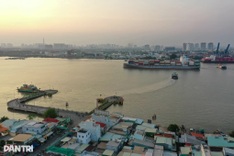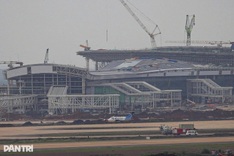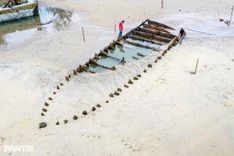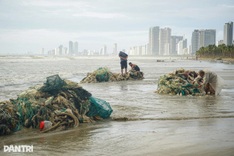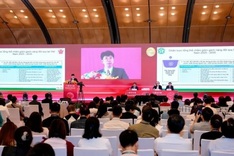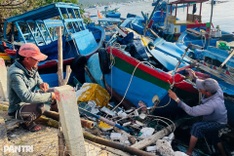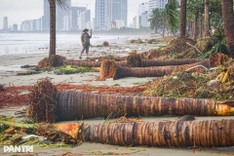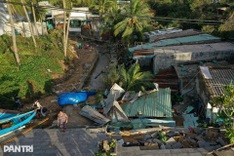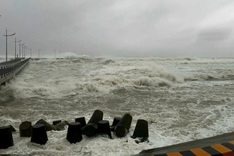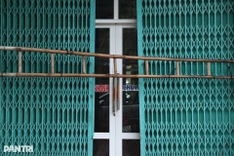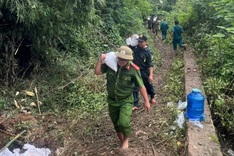Households moved out to make way for hydro power plants in the Central Highlands and several other localities are not happy in new areas and many have decided to move back to their villages, a survey shows.
 The Code Development Institute surveyed people resettled for the Hoa Binh and Tuyen Quang plants in the north, the Ban Ve plant in central Nghe An Province and the Yaly plant in the Tay Nguyen Central Highlands.
The Code Development Institute surveyed people resettled for the Hoa Binh and Tuyen Quang plants in the north, the Ban Ve plant in central Nghe An Province and the Yaly plant in the Tay Nguyen Central Highlands.
Results showed that 79 per cent of respondents were dissatisfied with their new locations.
"What they dislike most is the new settlement areas are so far away from their old places – an average of more than 150km," institute deputy director Pham Quang Tu said at a recent seminar on the issue.
"Natural conditions, including the soil, climate, vegetation are quite different from their home areas," Tu said.
The clearances created a big change and a major hurdle for the new settlers, many of whom could not overcome and adapt to the new conditions.
In addition, the productive land areas allotted to them are too small.
"Eighty-three per cent of the households complained that the productive land was much smaller than they had owned; only 5 per cent had the same area and 3 per cent had more land," Tu said.
Hue University of Science lecturer Le Thi Nguyen said that in another region, Thua Thien-Hue Province in central Vietnam, most of the plant owners had promised an equivalent or better life for the new settlers in terms of infrastructure, housing and productive farm land.
"But in reality their life is worse, particularly for farmers," Nguyen said.
Vi Thi Phuong, 59, from Thanh Hoa Village, Thanh Son Commune, Thanh Hoa Central Province, said she was happy with the new infrastructure, including electricity, roads, school, health clinic and housing.
"But we are not happy as we don\'t have much land to cultivate. That\'s why, many families have decided to go back to their old places in Tuong Duong to cultivate their terraced fields. My husband and I wished we were younger so that we could join them," Phuong said.
The Ban Ve project management board told each household they would be given 210sq m of land next to their house and 1.5ha of productive farm land in the new settlement areas.
And the board reported last month that all of the new settlers had received their houses and gardens and 75 per cent had received their farm land.
However, reality tells a different story, as Thanh Son People\'s Committee vice chairman Vi Trong Thuy related.
Thuy said new settlers coming to the commune in 2006 didn\'t all arrive at the same time so those who arrived first occupied land meant for later arrivals.
And further complications had arisen when locals had occupied land set aside for new settlers.
As a result, the promised land was not available when many of the new settlers arrived, Thuy said.
Ban Ve plant deputy director Nguyen Quoc Toan said settlers returning to their old places was not an issue.
"Some of them have returned to do jobs because their relatives are still living there or to cultivate their land," Toan said.
He blamed the district authorities for their poor co-operation with the project board in executing resettlement policies.
"The project\'s responsibility is to have the infrastructure ready for the new settlers," Toan said. "The management and operation is the responsibility of the local authorities."
However, Thanh Chuong District People\'s Committee vice chairman Phan Dinh Ha, in the vicinity of the Ban Ve plant, disagreed.
Ha said it was a district authority\'s job to clear the land for the project board to build the houses and the infrastructure. When all those civil works were completed the local authorities\' job is to do the acceptance work and help the new settlers stabilise their lives.
"That means the job of land allotment to the new settlers is the role of the project management board," Ha said.
Code Development head Professor Dr Le Van Khoa, who oversaw the survey, said it should be part of policy to consult affected people before choosing new settlement areas.
He said a hard-nose turnkey-style engineering procurement and construction contract was not appropriate in the case of hydro project resettlements which involved the social and livelihood impacts on uprooted families.

